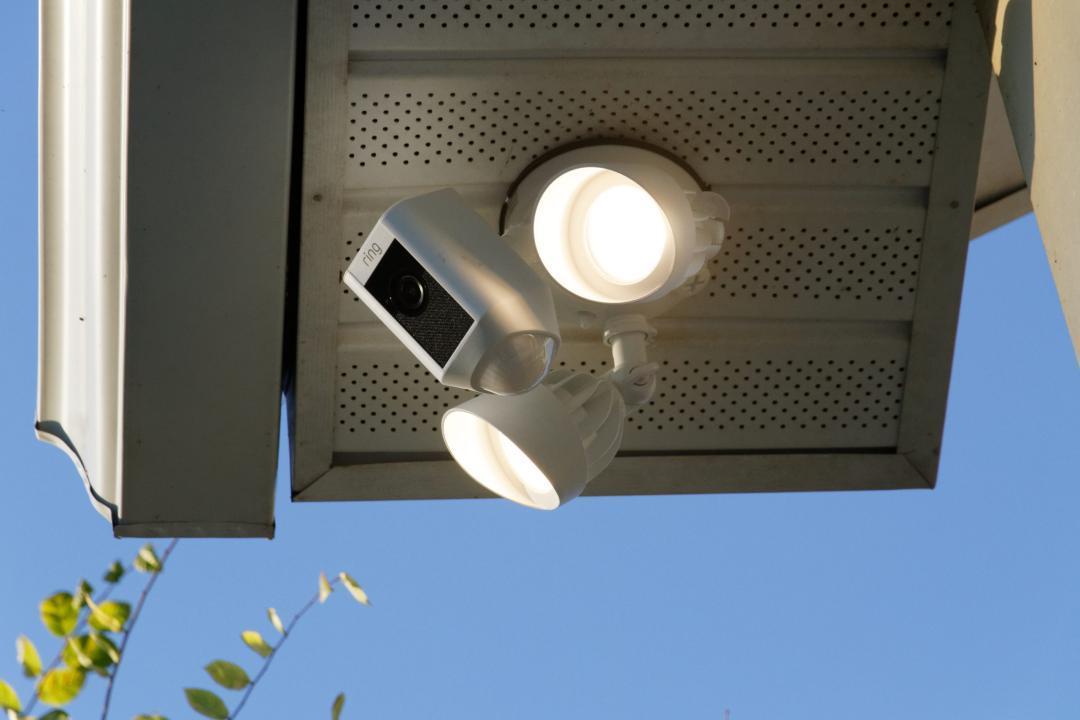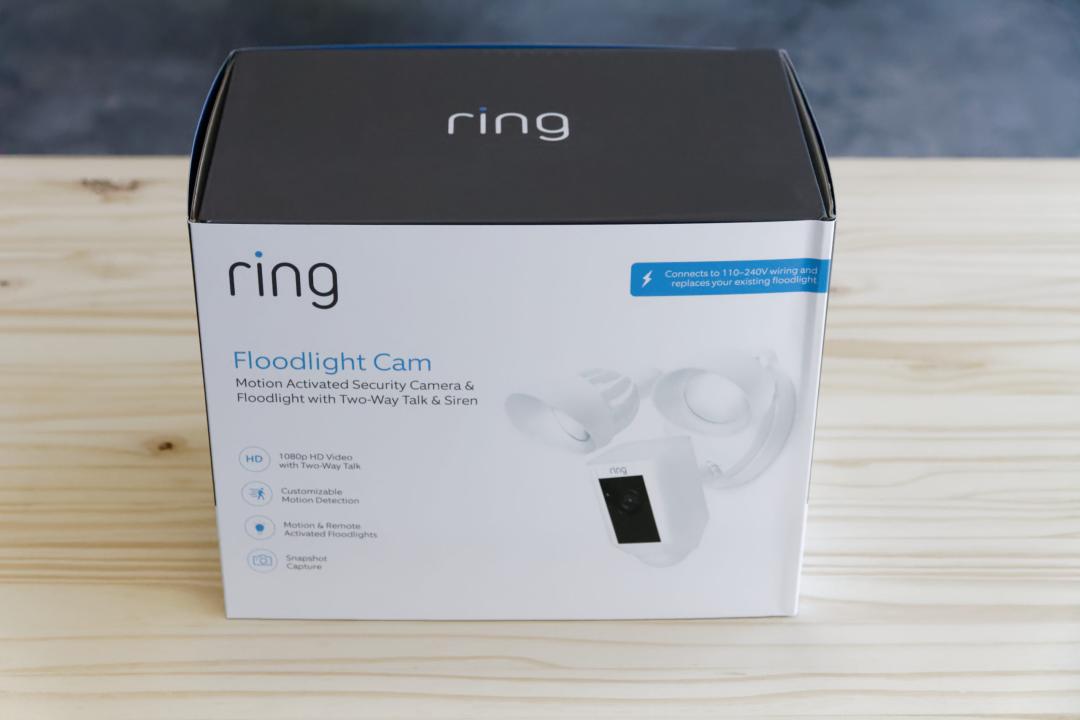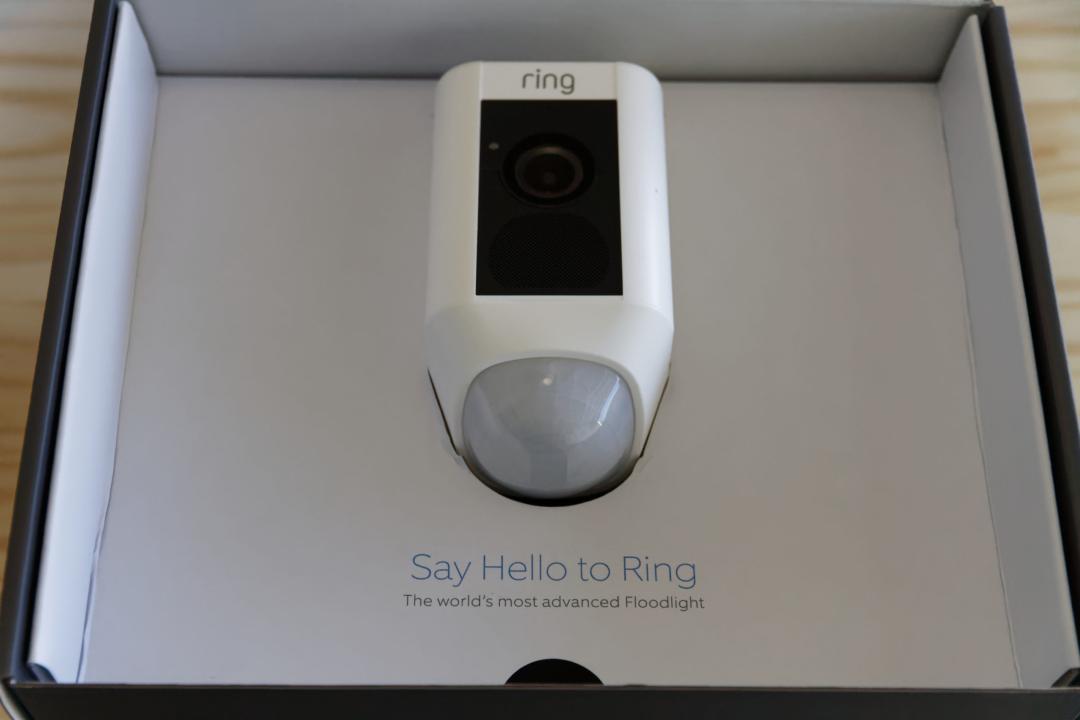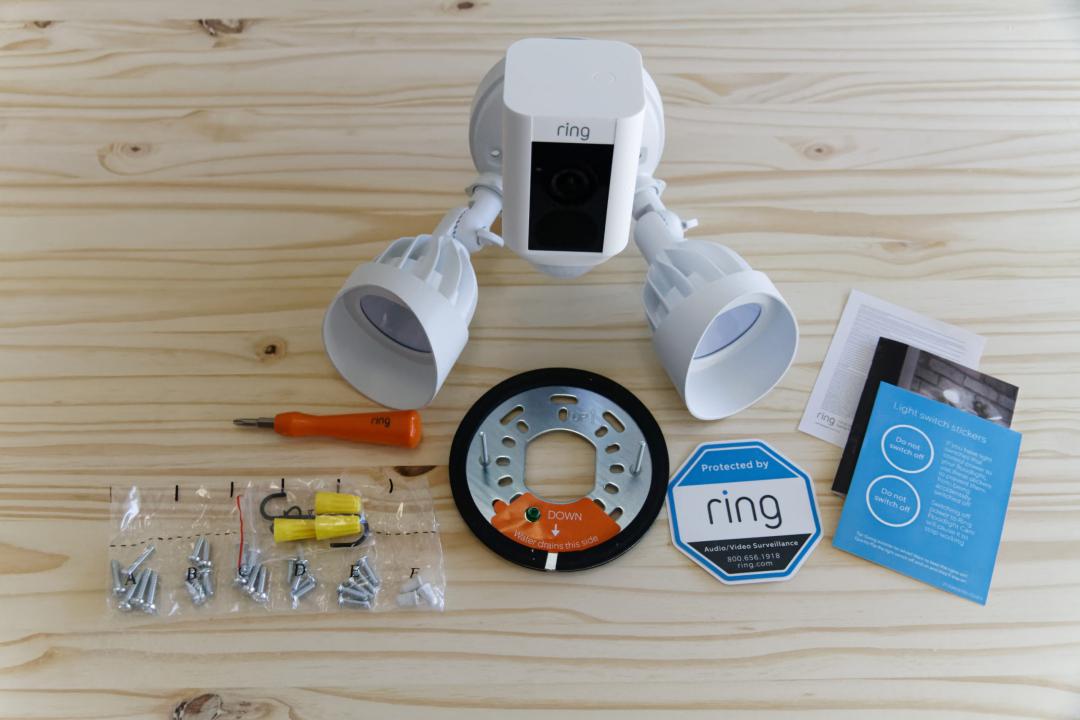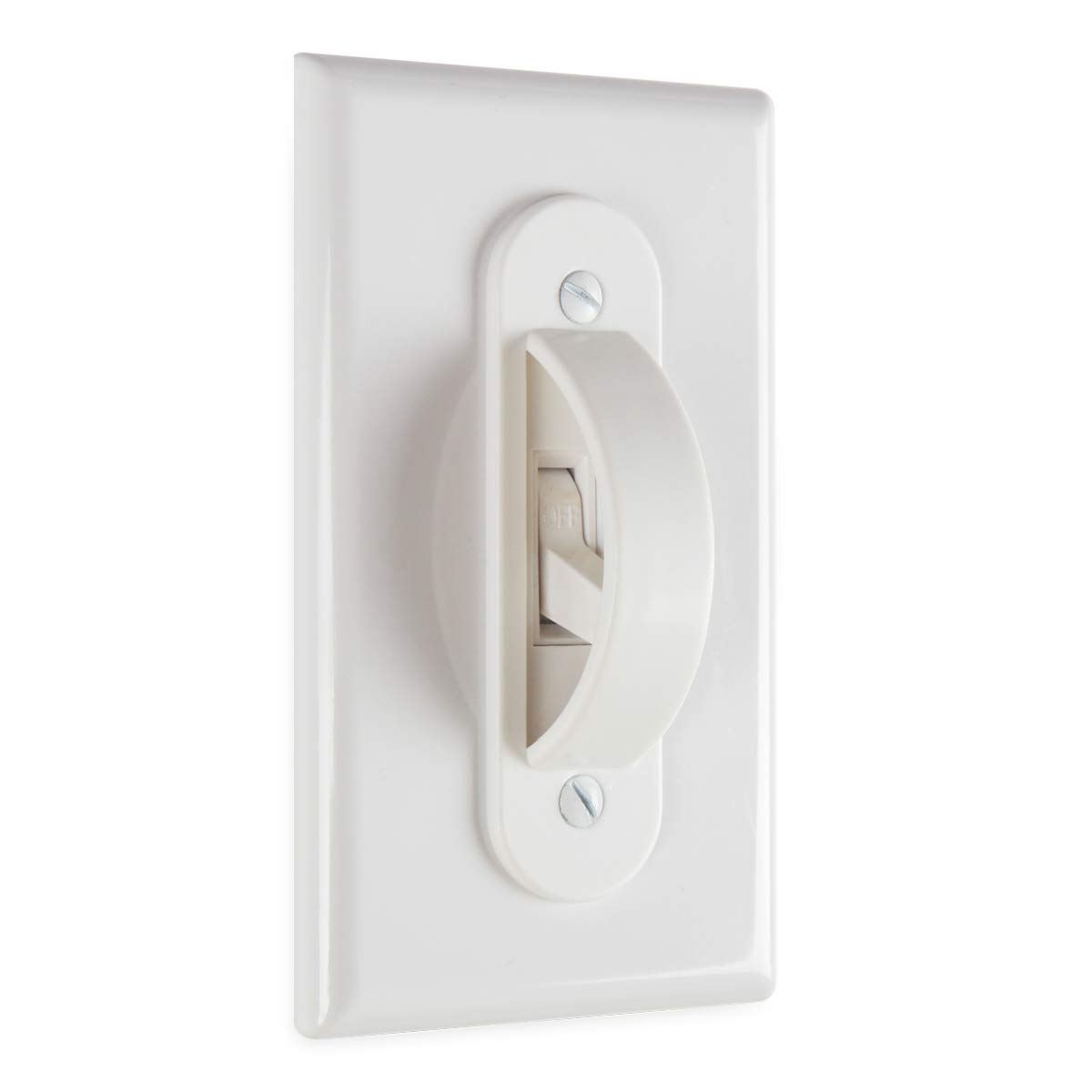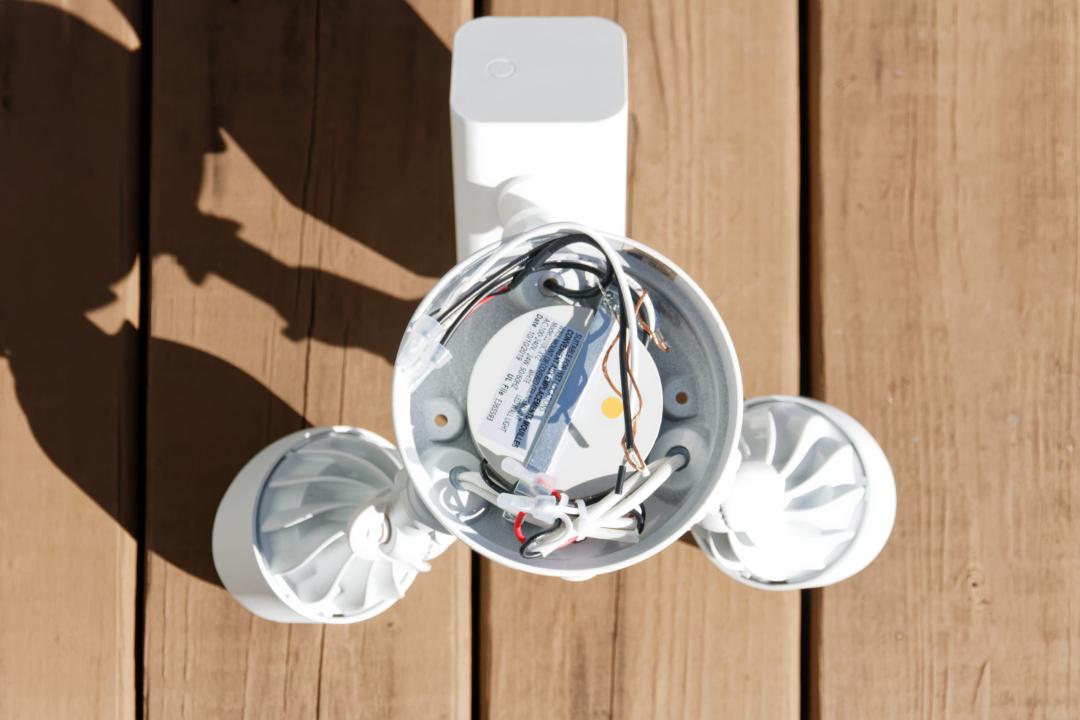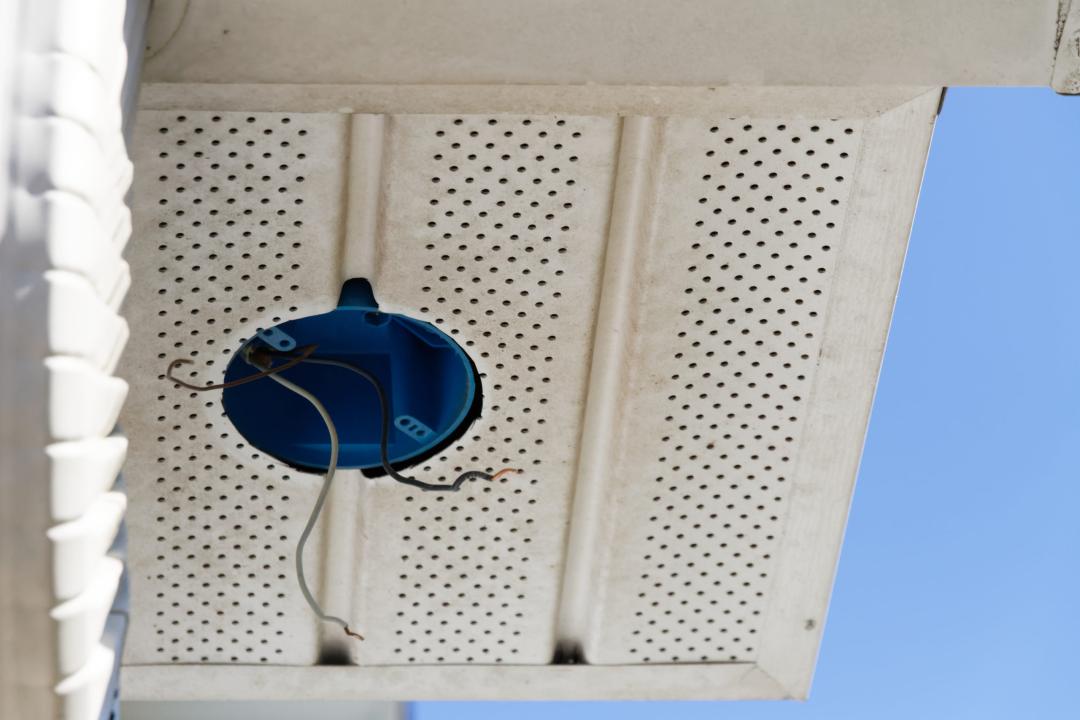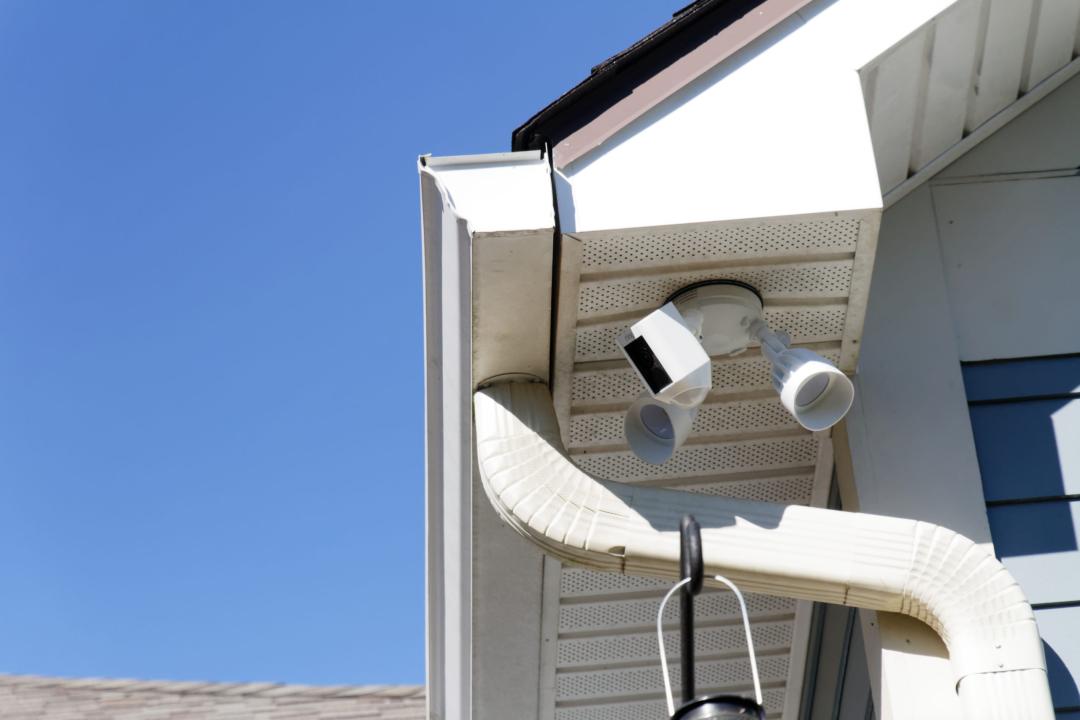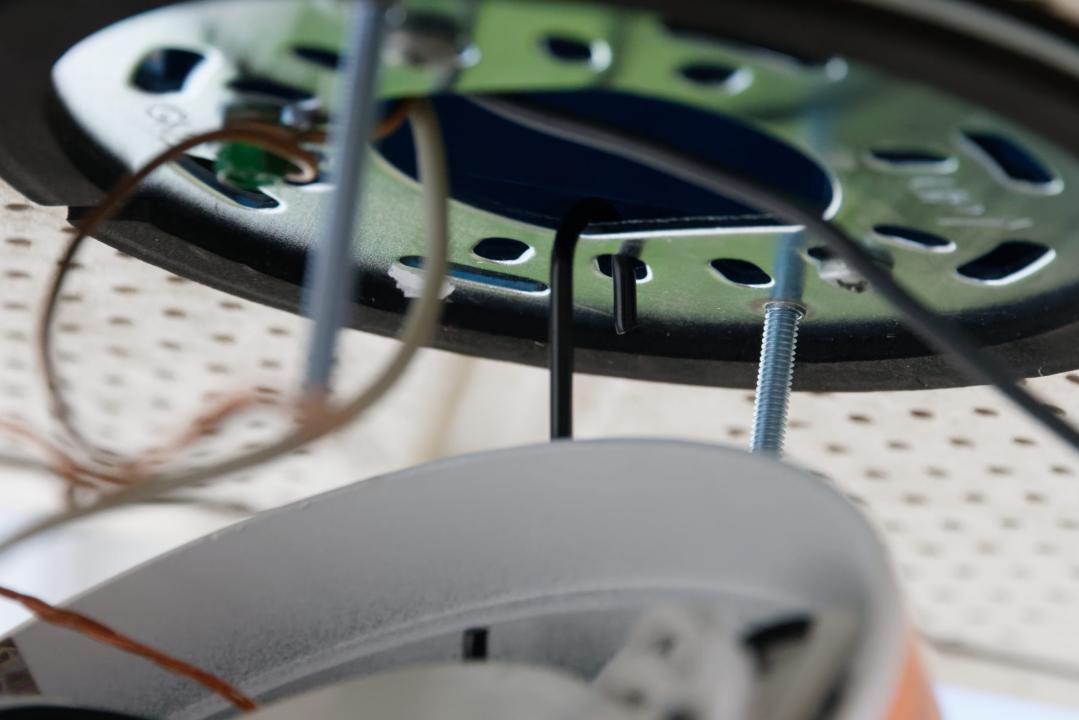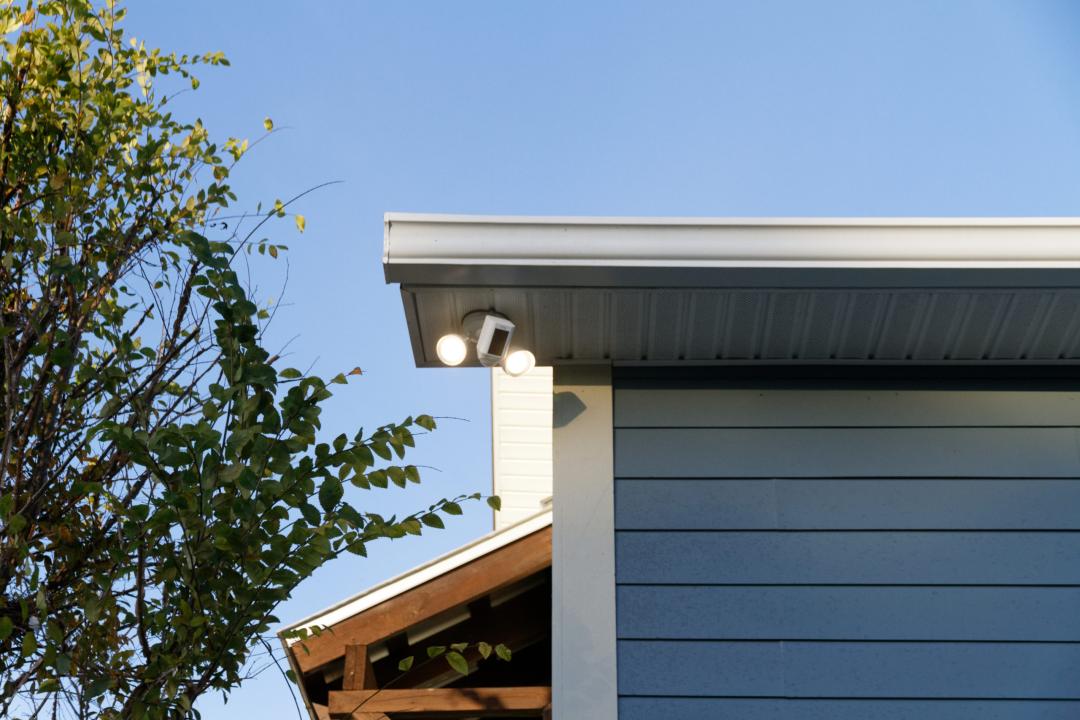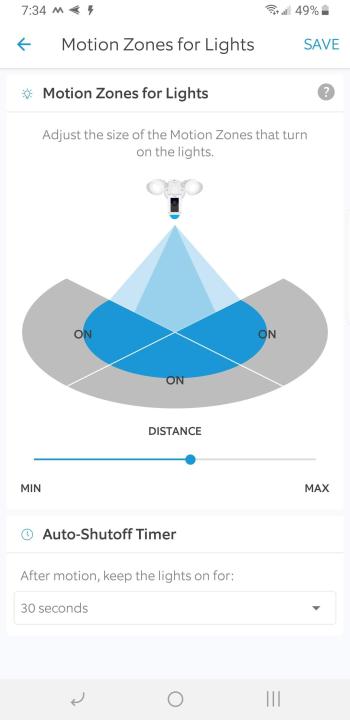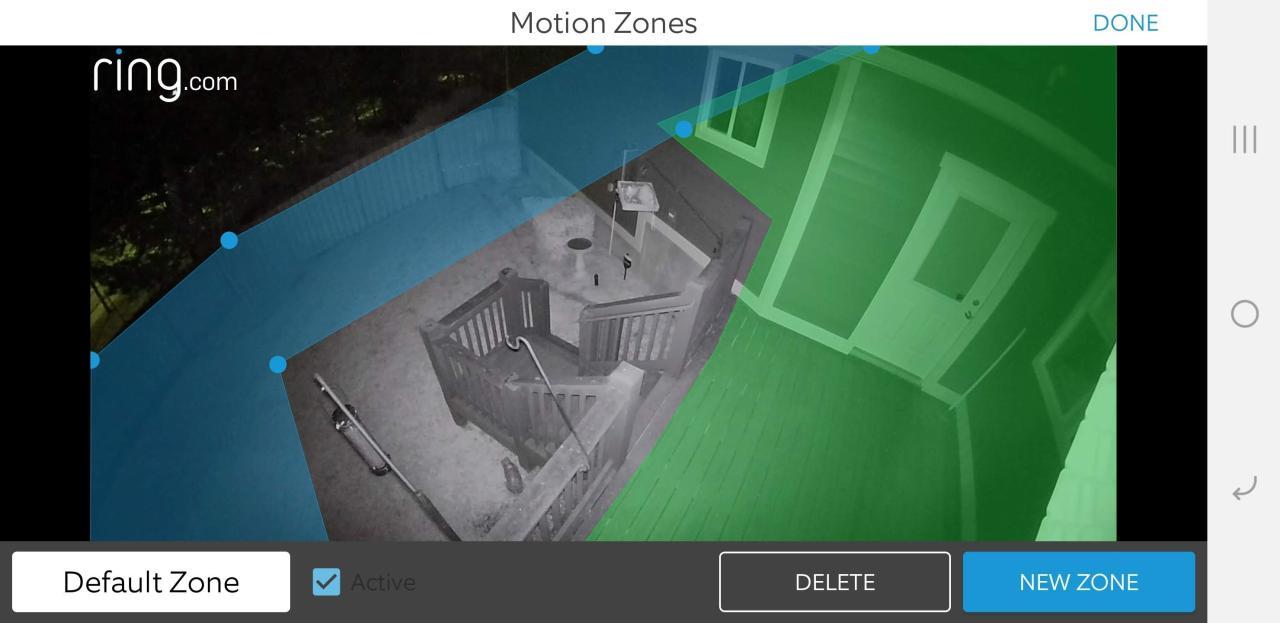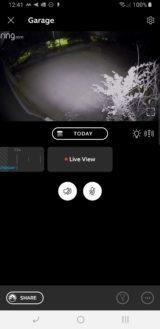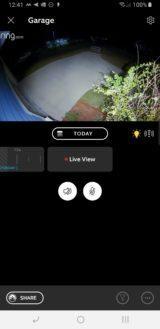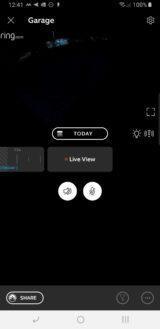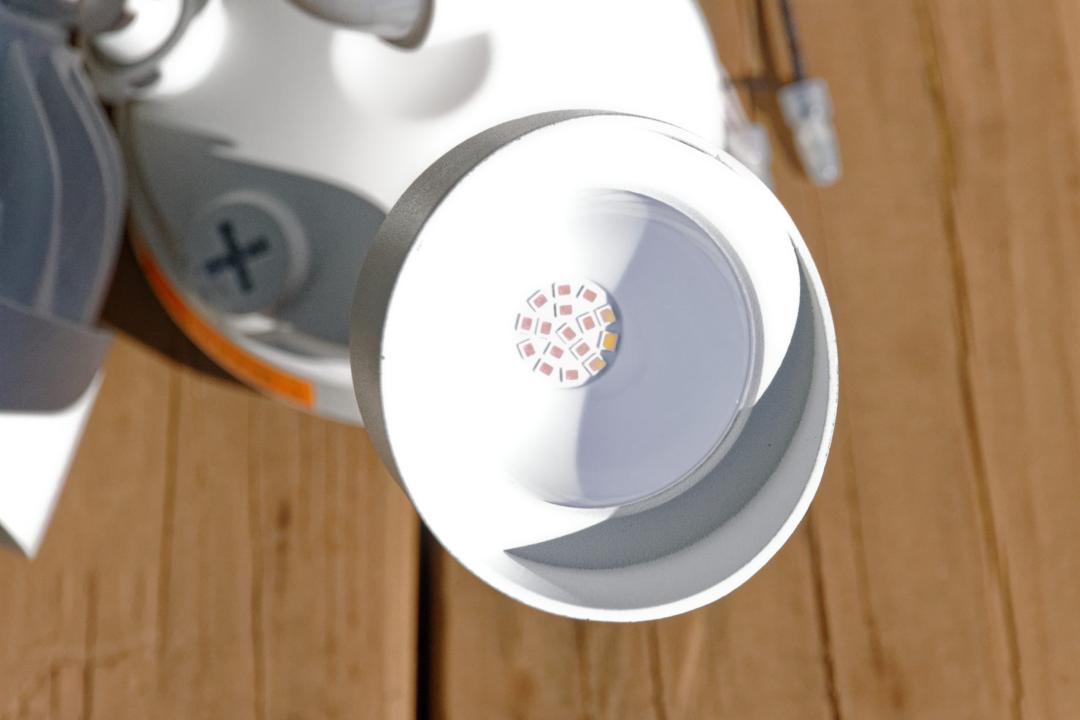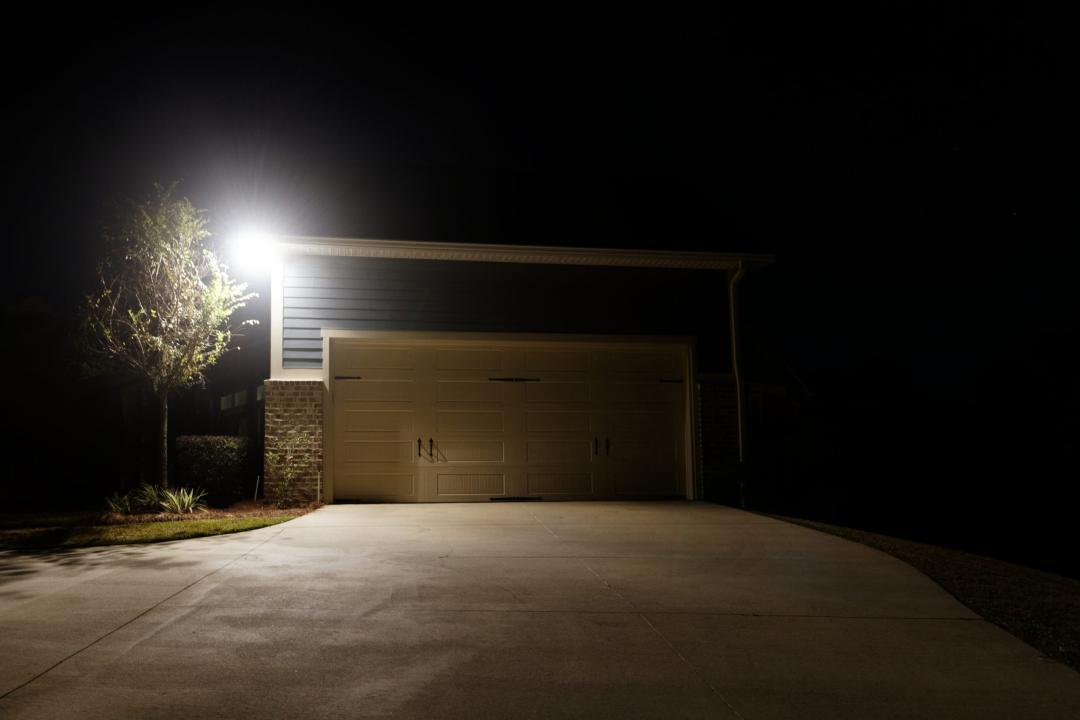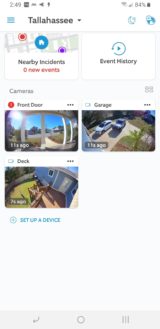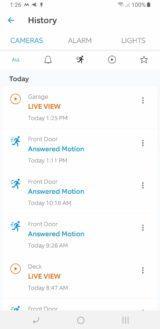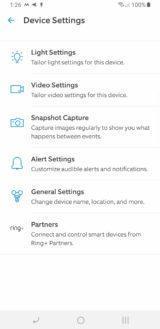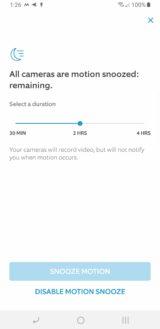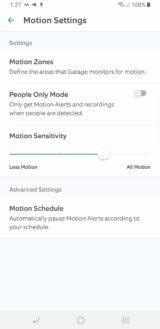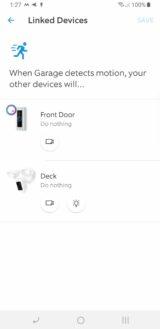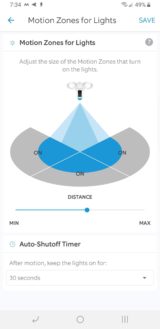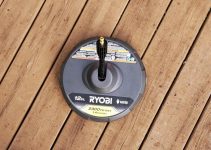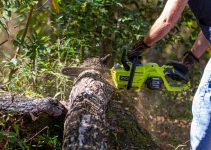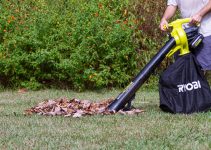A little bit outside of the garage today but just by a few feet. We’re going to ring in the new year with a review of the [amazon link=”B0727XJQLD” title=”RING Floodlight Camera” /].
[amazon fields=”B0727XJQLD” value=”thumb” image_size=”large”]
About a year ago, we installed a [amazon link=”B0849J7W5X” title=”RING Doorbell Camera” /] because we get quite a few deliveries each week and don’t always hear the knock or doorbell (I do work at home but our UPS and FedEx drivers rarely ring the doorbell or knock). There are also a lot of idiot kids in this town that love to test the community’s patience with their stupid and sometimes criminal behavior.
Our doorbell cam works quite well, albeit it does have a few glitches, mostly related to the mobile app. More on that in a few because those issues also affect other RING products. So, after reading reviews and watching videos, we decided to grab a few of the newer [amazon link=”B0727XJQLD” title=”RING Floodlight Cameras” /] to replace the standard floodlights around the outside of our home.
Now, before we dive in, you may have heard the news story in late 2019 of a little girl in her room where her parents installed a new indoor RING camera and it was “hacked” by a creepy dude talking to her through the camera in a creepy manner. This was NOT a hack of the RING system or network. Her parents used a username/password combo that the creepy guy got ahold of elsewhere and then used those same credentials to access the camera.
This could happen on any device or online account if you use the same login credentials for different accounts (and most people do) and someone who has those credentials just starts testing them on popular services.
RING has since implemented and is encouraging its users to activate two-factor authentication. Do it.
Table of Contents
What’s in the Box
First, the RING Floodlight Camera is packaged nicely. We’re not really into “unboxings,” so let’s just leave it at that. Our light is white but they are available in black, too. It would be nice to see other colors, like tan, beige or brown, to match various trim colors but it’s fine.
The light itself feels fine, too—it doesn’t feel super-sturdy or super-cheap. It’s mostly metal with some plastic parts here and there. We haven’t had it long enough to see how it will fare in various weather conditions but RING claims the unit can operate in conditions anywhere from -22°F to 120°F. Of course, here in North Florida, it can get up to 892° in the wintertime… so we’ll see.
In the box, you get plenty of options in terms of mounting. So, no matter which bolt size your existing floodlight setup uses, RING’s probably got you covered in the bolt department.
RING also includes a window sticker to warn bad guys they’re being watched and two smaller stickers for your light switch(es), warning you and your family not to turn the switches off. Remember, once installed, you have to leave the light switch that controls the floodlight on at all times or the system will not work.
We opted to buy a couple of [amazon link=”B00DTXKOTM” title=”$6 light switch guards” /] from Amazon.com, which look nice and work perfectly to prevent accidental light switch shut-offs but still allow access to the switch. They just attach on top of an existing light switch wall plate using its existing screws.
Oh, and there is no battery backup on the RING Floodlight Camera, so power outages or accidental flips of the light switch will render the system useless until power is restored. They do restart after an outage within a matter of minutes. And if you ever need to reboot the device for whatever reason, you can hold the top button down for exactly 20-seconds and it’ll restart itself with no need to redo your app settings. A quick push of that same button puts the device into setup mode, for use with the app.
Installation (Kinda)
We won’t get into the specifics of physically installing the RING Floodlight Camera. It installs just like any floodlight with three wires and some bolts, mounting up to a 4″ round weatherproof electrical box. It took us all of 15 minutes to install the thing.
Here’s a video from RING explaining the installation process if you want more insight. Or, call an electrician if you’re just not comfortable doing this stuff. It really is simple, though. Just make sure the breaker is off before you start! ⚡
RING does include a handy little hook for hanging the light from the installed junction box bracket so you can use both hands to hook up the three wires securely. A thoughtful addition, indeed, and very helpful when you’re on a ladder.
The floodlights around the outside of our house are mounted to the soffits. RING had, in the past, stated that their Floodlight Cams could not be mounted upside down from ceilings of soffits but that has since changed, presumably with some changes to the device itself. As long as you orientate things properly, the lights will work just fine mounted to a soffit or ceiling—lots of people have mounted them this way.
RING suggests mounting the Floodlight Cam no higher than 9′. Well, one of our soffits is 12′ high. We can’t change that, so we installed it and it seems to be performing just fine at 12′. Others online have said the same.
Features & Functionality
The camera itself on the Floodlight Cam is almost identical to all of RING’s products. It’s a 1080p HD video camera with a wide-angle lens.
The motion sensor on the bottom of the camera has a 270° field-of-view, which is quite wide. Anything moving within that area will trigger the lights and camera. The camera’s coverage area (how much you can see), however, is not that wide at 140°. Within the RING app (more on that below), you can adjust the range of the motion sensor, which is a useful feature.
With our deck cam, we also had to turn to the RING app’s “Motion Zones” feature to draw custom motion detection zones because the birds using our many bird feeders were constantly triggering the camera to record and the app to make its notable wind chimes noise. This is a very handy feature and can be useful for anything that could constantly trigger the camera—decorative water fountains, trees that blow in the wind a lot, etc.
The video coming out of the camera is fairly crisp and clear in the daytime and not too bad at night. With the floodlights off, it uses infrared to illuminate what’s in front of it for a fairly decent 30-40 feet. Once the floodlights are triggered, the infrareds are disabled and things get brighter and more colorful, as you can see below from our deck cam at 3 AM. The drastic light cut-off and pattern is because there’s a downspout right next to the floodlight. We might move that one day. Maybe.
The camera view will never be pitch black at night, due to its integrated infrared lights, but we’re showing you all four scenarios below for comparison (daytime, nighttime w/ infrared, nighttime with floodlights, and nighttime with no illumination).
Unlike their [amazon link=”B0758L64L9″ title=”Spotlight Cam” /], the RING Floodlight Camera has the two separate floodlights instead of the integrated LED strips on either side. And while the two floodlights are smaller than traditional floodlights, they put out 1800 lumens of light—about five times that of the Spotlight Cam. That’s not a ton of light but they are plenty bright for most applications.
The floodlights have a color temperature of 3000k (Kelvin), which is a warmer tone (more yellowish) than daylight bulbs (5000k and more blueish in color) but not as warm as most indoor lamps, which come in at around 2700k and look more yellow. It’s a good color balance for an outdoor lighting system, in our opinion.
The RING Floodlight Camera also has an integrated 100db siren. It’s not too loud but enough to scare off would-be intruders. A common pre-purchase concern we kept finding was that the siren might go off accidentally, during a motion event, but the siren has to actually be turned on manually, through the app. It will also automatically shut-off after 30 seconds. We like the siren option as a sort of panic mode but it’s likely that it’ll never be used (or let’s hope, at least).
Finally, there is two-way audio with noise cancellation built into the device, so you can speak to or with whoever is on camera. There is a very slight delay but that is to be expected. This listen/talk feature is more useful with the RING Doorbell Camera but it all depends on where you’re mounting the Floodlight Cam. In a backyard, it could be useful to call the kids in for dinner. Or, of course, to yell at a bad guy trying to break into your back door. Here, you can see the placement of the speaker just under the camera lens.
Some online complaints suggest that you need a very fast Wi-Fi connection for these devices to work properly. RING states that its Floodlight Cam only requires 1-2 Mbps. We’re willing to bet that everyone reading this has a connection at least 10x that speed. But, placement is a variable and Wi-Fi connections do lose steam the further away a device is from the source router.
For that reason, RING offers its RING Chime Pro. This little device plugs into any wall outlet and acts as a Wi-Fi extender and notifications amplifier with different tones. You can have more than one throughout your home. For our setup, we already have a mesh network, so we didn’t need these.
[amazon fields=”B01N9EX0YR” value=”thumb” image_size=”large” image=”2″]
Oh, and we won’t go into it here but many RING devices, including this one, are also compatible with several other smart home systems, such as Alexa, ADT Pulse, IFTTT, WeMo, Wink, and others. Visit RING.com for more on all of that.
The App
The RING mobile app (Android and IOS) is necessary and sometimes frustrating. It was actually fine up until late 2019 when an update forced us into a particular ‘Timeline’ mode that we and lots of others did not like at all. We’re not going to do a full-on review of the app and we assume it’ll always be evolving. Or perhaps we hope that is the case.
With the app, you can name your cameras, control various camera and light settings, define motion detection zones to avoid false-positive notifications and recordings, pull up a live view of any camera in your own network from anywhere, speak with those you’re watching, activate or deactivate the floodlights, activate a 100db siren/alarm, take snapshots, review previous recordings, star, download, or share recordings with your neighbors, and more.
Here’s a gallery of screenshots from the app on an Android smartphone:
The app has the potential to be great but the user experience is oftentimes poorly executed. Critical screens in the app (like the dashboard and timeline views) have way too much wasted white space when viewed on a tablet in landscape mode, which makes the camera views smaller than they should be. And based on what we’ve read, lots of people use older iPads and similar devices to constantly monitor their cameras.
The app (or perhaps cameras) are also way too slow and require too many clicks than they should in order to display a full-screen, live view, which is really important when someone sets triggers the camera. This is especially an issue with the RING Doorbell Camera, where you probably want to see who is at the door very quickly.
RING did launch a companion app (if you can call it that?) called, Rapid RING but that app is only designed for quick manual access to the cameras, it doesn’t open them upon motion or let you control any other settings. We won’t even link to it… just fix the primary app, RING!
Of course, this post will be out here for a while and RING will hopefully have addressed some of these issues by the time you read it. The app experience isn’t a deal-breaker but it absolutely needs work at the time of this review.
Recording & Reviewing Motion Activities = $ub$cription
While the lights will still trigger on and you can see a live video stream without one via the RING app, you will need a RING Protect or RING Protect Plus subscription if you want to record and review any camera activity to and from the cloud. There are no SD cards in the RING devices. The recordings are good for 60 days and you can “star” those recordings you don’t want to lose or just download them directly to your mobile device.
There are currently two plans available:
- Ring Protect: $3 per month per camera or doorbell or $30/year
- Ring Protect Plus: $10 per month for unlimited cameras and doorbells (at a single address) or $100/year
Honestly, with all the different cloud and streaming services we subscribe to, these prices aren’t bad for peace-of-mind. You may disagree and that’s cool.
Final Thoughts
If you’re already invested in the RING system or plan to install more than one RING device, then RING Floodlight Cameras are a nice addition to that ecosystem. They are, in our opinion, great in features, compared to similar devices.
If you just need one or maybe even two floodlight cameras, they are pretty a good setup especially if you already own a RING Doorbell Camera or any other RING product. You may find other cheaper setups but as they say
“You get what you pay for.”
We chose these devices because we already had the [amazon link=”B0849J7W5X” title=”RING Doorbell Camera” /], which we would recommend on its own.
[amazon box=”B0727XJQLD” image=”2″]
UPDATE: Within a week, both floodlights failed on one of our RING Floodlight Cams. We contacted RING support, and a very nice lady spent about 30 minutes troubleshooting the device before shipping a replacement. While frustrating, these things happen and we don't believe that a defective unit that was replaced immediately should affect our overall review of the product.
Rating Criteria
Design
Build Quality
Performance
Features
App
Support
Value
Overall Rating
They are, in our opinion, great in features, compared to similar devices.

